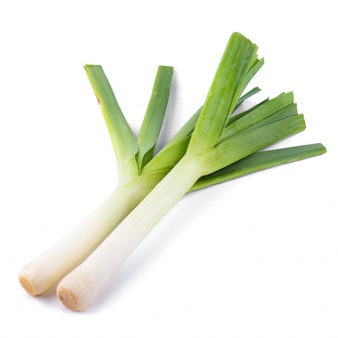
- Address : P.O. Box 11, Gannoruwa rd, Peradeniya, Sri Lanka
- E- Mail : director.hordi@doa.gov.lk
- Telephone :(+94) 081-2388011-12-13
- Fax :(+94) 081-2388234

Leeks
Allium ampeloprasum
Leeks is belong to the onion family (Alliaceae). But leeks do not form bub.
Released Varieties
Climatic requirements/ Areas suitable for cultivation
Leeks grow well in cool climatic condition of up country areas: Nuwara Eliya and Badulla. Stem thickness is reduced under high temperature condition.
Soil
Well drain soil with high organic matter is good for leeks cultivation. Best pH range is 5-6.
Seed requirement
3750 g/ha
Nursery Management
It is required about 200-225, 3 x 1 m size nursery beds to produce plants for one hectare. Seeds are established 15 cm apart rows and cover seeds by small amount of soil.
Land preparation
Plough up to 40 cm depth. Add well decomposed organic manure to the soil. Prepare 1.2 x 3 m size raised bed.
Planting
Irrigate daily for 4 days after established seedling. It is important to light irrigation in morning to avoid leaf scorching.
Spacing
15 x 10 cm
Fertilizer
Organic manure 10 t/ha
Times for apply | Urea kg/ha | TSP kg/ha | MOP kg/ha |
Basal fertilizer | 85 | 270 | 50 |
Top dressing (1 &3 months after planting) | 85 | – | – |
Top dressing (2 &4 months after planting) | 85 | – | 50 |
Water supply
Irrigate daily for 4 days after established seedling. It is important to light irrigation in morning to avoid leaf scorching.
Weed Control
Weeds are control with the intercultural operation. Manually remove weeds before fertilizer application.
Pest Management
80-90% distribution occurs with transportation of organic matter and larvae feed on the developing shoot and young roots of the developing seedling
Damage symptoms
- Wilting leaves and plants shrivel.
- Pull up the damage plants; you will see the tiny root maggots on the roots
Management
- Regular field monitoring
- Crop rotation
- Place yellow sticky traps around the field edges just above the growing leeks
- Remove and burn infected plants
- Plough the soil to bring the pupa to the surface of the soil
- Application of properly decomposed FYM(Farm Yard Manure)/compost
Chemical control
- Fipronil 50 SC
Damage symptoms
Habitually they are nocturnal. Early instars make round holes in leaves. Later, the shoots are damaged close to the ground, often cut the whole plant at the base. Cut several plants in a single night and pulling the plant stem belowground. Cut plants show wilting during day time.
Management
- Regular monitoring
- Hand collecting and destroying
- Weed management
- Proper field sanitation
- Plough the soil deeply to bring the larvae and pupa to the surface of the soil
- Encourage predatory birds to preying the worms during tillage operation
Chemical control
- Profenophos 500 g/l EC at the rate of 32 ml per 16 l of water
- Etofenprox 100g/l EC at the rate of 24 ml per 16 l of water
Disease Management
- Field sanitation
- Recommended fungicides – Maneb, Mancozeb, Propineb, Tebuconazole
- Recommended fungicides- chlorothalonil
Harvesting
Crop cab be harvest about 4 ½ months after transplanting.
Yield
20-30 t/ha
